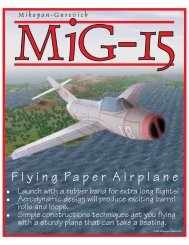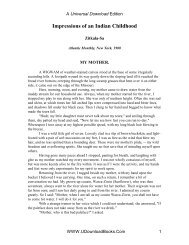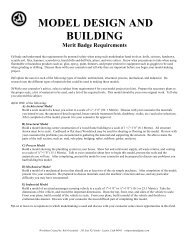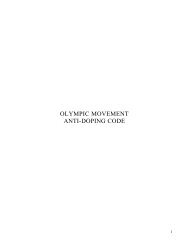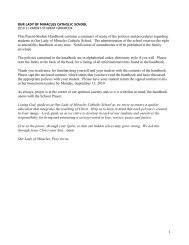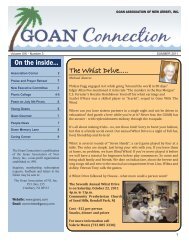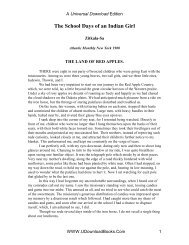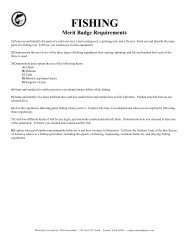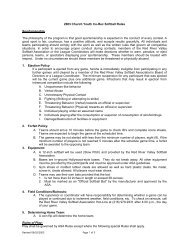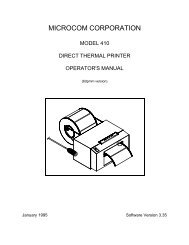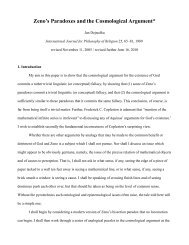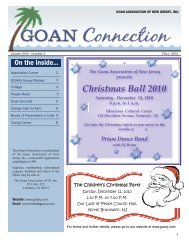Dummett's Backward Road to Frege and to Intuitionism - Tripod
Dummett's Backward Road to Frege and to Intuitionism - Tripod
Dummett's Backward Road to Frege and to Intuitionism - Tripod
You also want an ePaper? Increase the reach of your titles
YUMPU automatically turns print PDFs into web optimized ePapers that Google loves.
explain them, though here the problems are material, not formal, so our approach is experimental rather<br />
than stipulative.<br />
The Heijenoort-Hintikka critique seems based on the assumption that for <strong>Frege</strong>, names are<br />
objects. And that might be based on the assumption that for <strong>Frege</strong>, every entity is an object or a<br />
function. Now, <strong>Frege</strong>’s names are very plausibly glossed as signs (physical objects) expressing<br />
immaterial senses. Thus it might seem that they are not wholly objects, since their component senses<br />
are not objects. And it might seem <strong>to</strong> follow that if we can directly refer <strong>to</strong> them as signs expressing<br />
senses, we can also indirectly refer <strong>to</strong> them as senses expressed by signs, <strong>and</strong> that either way, they are<br />
not strictly objects, so that strictly objectual quantifiers should not range over them. But <strong>Frege</strong> makes it<br />
clear that all signs are objects (1970: 194). Even the equality (identity) sign is an object (1970: 194).<br />
Thus names cannot be a class of signs, namely signs expressing senses. For all signs are objects, <strong>and</strong> all<br />
objects are complete; but many names are incomplete, including the name for equality. (Their<br />
incompleteness can only be due <strong>to</strong> their sense.) Thus names are not objects. The charitable gloss is that<br />
names are emergent entities. Their emergent property is that of explaining the possibility of an<br />
informative identity statement. Neither mere signs (nor names considered as mere labels) nor mere<br />
senses have that property. Making names objects by making them a class of signs would sweep their<br />
emergent nature under the rug.<br />
9. As Dummett says, most of the objects <strong>Frege</strong> names in his formal notation are value-ranges (1995:<br />
18). But <strong>Frege</strong> intends his notation as an ideal language for all science, including colors <strong>and</strong> shapes—a<br />
lingua characteristica, not a calculus ratiocina<strong>to</strong>r (Begriffsschrift, 6–7, see 2–3).<br />
10. See Haaparanta (1985: 38–40, 46 n.26); my (1999: 116; 2001, 26).<br />
11. Dummett rightly says that <strong>Frege</strong> rejects facts as a category in the realm of cus<strong>to</strong>mary references,<br />
<strong>and</strong> very plausibly says that <strong>Frege</strong> analyzes facts as being in the realm of senses, specifically as those<br />
thoughts which are true, in “The Thought” (<strong>Frege</strong> 1968a: 531; Dummett 1981: 369, 659, 662; 1981a:<br />
72



